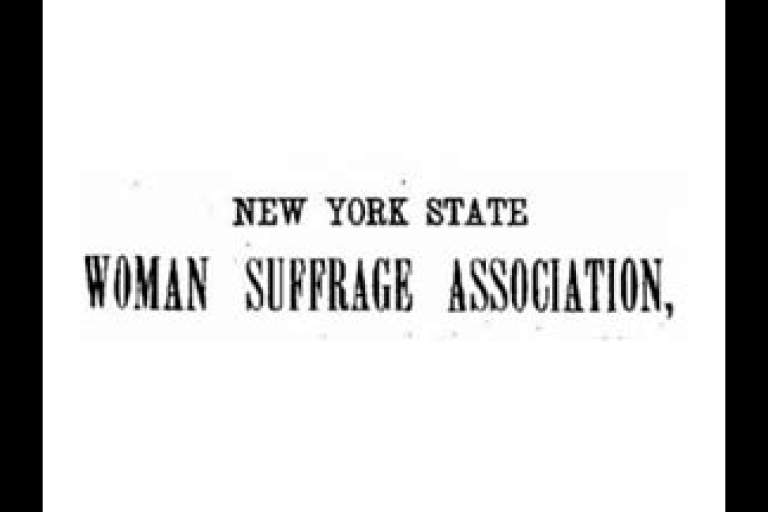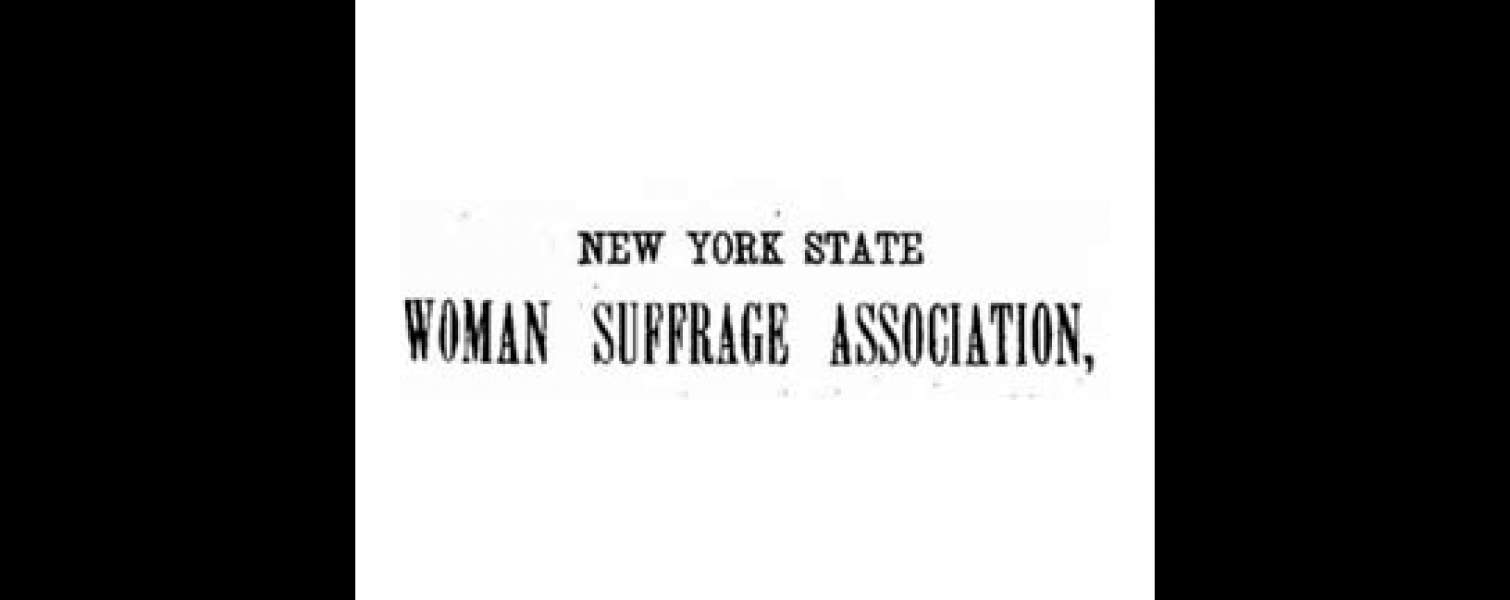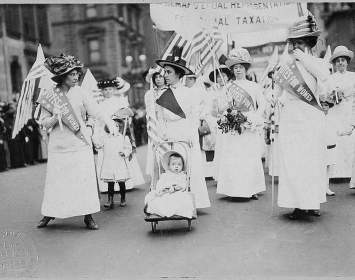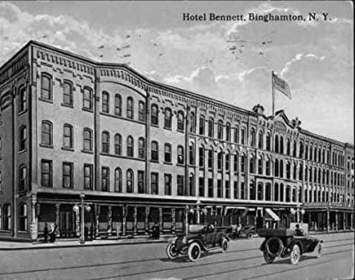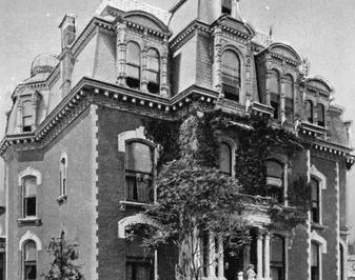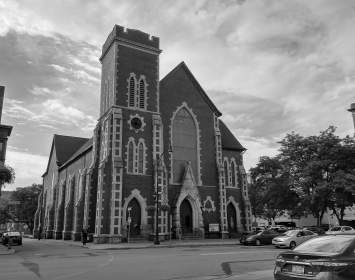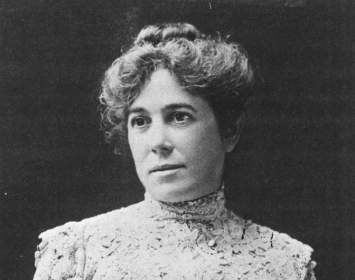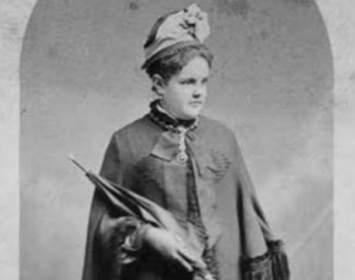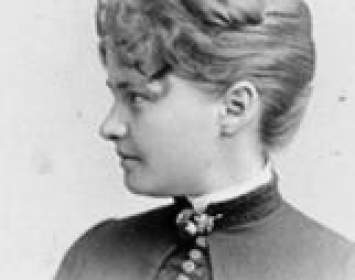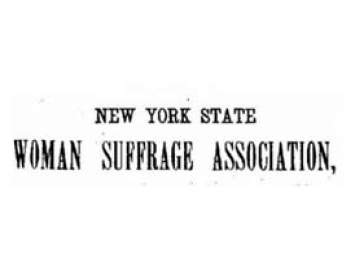The forty-fifth annual convention of the New York State Woman Suffrage Association (NYSWSA) was held at the Centenary Church (now Landmark Church) and the Bennett Hotel in downtown Binghamton on October 14–17, 1913. (Nineteenth-century practice was to use the singular, woman's; later practice was to use the plural, women's.) In addition, a reception was held at the Clubhouse, mansion headquarters of the Monday Afternoon Club, a local women's organization.
Prominent participants included (in order of appearance) NYSWSA president Harriet May Mills; nationally prominent suffragist Carrie Chapman Catt; Maud Ingersoll Probasco, younger daughter of nineteenth-century freethought orator Robert Green Ingersoll; and suffragists including Gertrude Nelson Andrews; Isabel Howland; Ella H. Crossett; Marie Jenney Howe; Mrs. Seward A. Simons; Leonora O'Reilly; Helen Brewster Owens; Mrs. Charles Tiffany; Gertrude Foster Brown; and the nationally prominent suffrage activist Anna Howard Shaw.
This convention's story began one year earlier. In 1912, Binghamton suffrage activists Margaret Cameron Topliff and Ida Wales Gitchell had founded a Votes for Women Club headquartered in downtown Binghamton. (Topliff was a member of NYSWSA's board of directors.) Attending the forty-fourth annual NYSWSA convention in Utica, they resolved to have the next year's convention in Binghamton. Though other cities also vied for the event, Topliff and Gitchell campaigned so effectively at the Utica convention that Binghamton was selected for the 1913 event.
Some 162 delegates attended the convention. A ballot proposition to extend the franchise to women in New York State would be decided in the general election of 1915, so the need to plan future campaigning was particularly urgent. (The measure failed at the polls, but a similar measure passed in 1917, making New York the fourteenth state—and by far the largest—to institute woman suffrage.)
The event's program began one day before the convention proper, on the afternoon of Monday, October 13, with an informal conference held at the Bennett Hotel. Harriet May Mills presided. Mills led a brief board meeting at the Bennett on the morning of October 14, after which the convention proper began at Centenary Church.
Tuesday, October 14. The public program began at 11:00 a.m. with a meeting of NYSWSA's State Executive Committee. Mills again presided. A business meeting consumed most of the afternoon, during which Harriet May Mills delivered her annual address and Maud Ingersoll Probasco delivered the treasurer's report. At 6:30 p.m., a parade formed at Court House Square and proceeded two blocks east down Court Street to the church, witnessed by large crowds. An evening plenary session featured a welcome by Binghamton mayor John J. Irving, followed by addresses by Margaret Topliff and local businessman and former state senator George E. Green. The keynote speaker was the nationally prominent suffrage leader Carrie Chapman Catt.
Wednesday, October 15. Gertrude Nelson Andrews reported on "Educational Work." Isabel Howland reported on Harriet May Mills's old beat, the New York State Fair. Ella H. Crossett reported on "Grange Work for Suffrage." Rochester was selected as the site of the 1914 convention. Catt spoke on "The Plan of Campaign," after which county chairwomen reported on their activities. At 4:30 p.m. a reception was held for delegates sponsored by the Monday Afternoon Club, a local civic organization, at its palatial "Clubhouse." The evening session, once more at Centenary Church, was chaired by Marie Jenney Howe. Mrs. Seward A. Simons spoke on "What Women Are Doing with the Vote in California." Additional presentations were made by the Rev. L. M. S. Hayes and by New York City labor leader and suffragist Leonora O'Reilly.
Thursday, October 16. Helen Brewster Owens of Ithaca conducted an organizer's conference, which was followed by business meetings. Mrs. Charles Tiffany (president of the College League of New York and mother of decorative artist Louis Comfort Tiffany) spoke on cooperation with college activists. The convention elected Gertrude Foster Brown president of NYSWSA, succeeding Harriet May Mills. A new treasurer was elected, replacing Maud Ingersoll Probasco, but the convention report is ambiguous as to whether Mrs. Edward M. Childs or Mrs. Henry W. Cannon (Jennie Olive Curtis Cannon) was elected to this post. The evening session featured the president-elect's address by Brown and addresses by prominent local resident Charles M. Dickinson and perennial convention favorite Anna Howard Shaw.
Friday, October 17. Final convention business was completed at Centenary Church in the morning. At 11:30 a.m. a board of directors meeting was held at the Hotel Bennett. Isabel Howland was appointed chair of the State Fair committee and Helen Brewster Owens president of the Resolutions Committee.
Centenary Observance. The Forty-Fifth Annual Convention was celebrated in 2017, the centenary of woman suffrage in New York State, by a lavish costumed reenactment of the convention parade and of a convention session at Landmark Church. In 2018, a smaller costumed re-enactment highlighted the dedication of a new historical marker at the church.
Thanks to Christopher Philippo and Roger Luther for historical research.
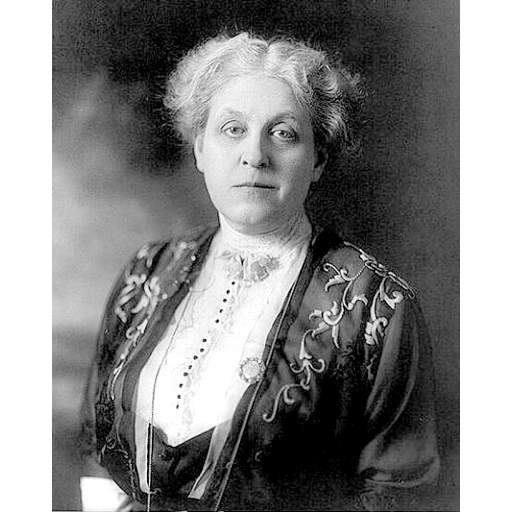
Carrie Chapman Catt
Carrie Chapman Catt delivered the Binghamton convention's keynote address.
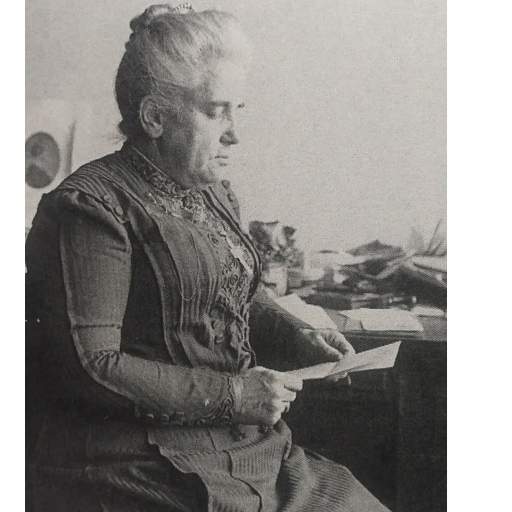
Anna Howard Shaw
Cleric and physician Anna Howard Shaw was a perennial marquee speaker at conventions of NYSWSA, a role she successfully fulfilled at Binghamton.
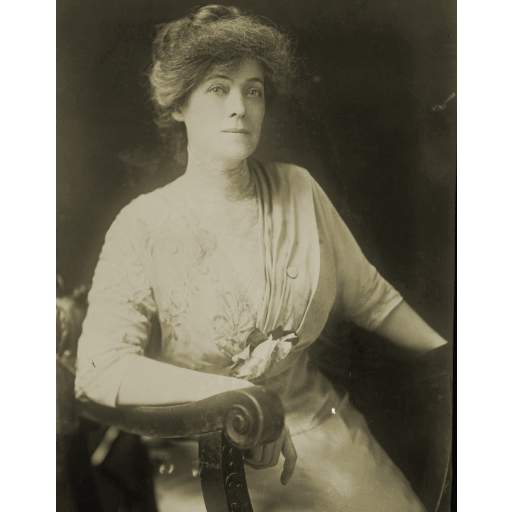
Gertrude Foster Brown
Gertrude Foster Brown was elected president of the New York State Woman Suffrage Association at the convention, succeeding Harriet May Mills.

Margaret Cameron Topliff
Margaret Cameron Topliff helped bring the 1913 NYSWSA convention to Binghamton. The only known photo of Topliff, this is a magnification of a tiny image heavily digitally enhanced to show detail.

Maud Ingersoll Probasco
Maud Ingersoll Probasco, the younger daughter of prominent agnostic orator Robert Green Ingersoll, served a partial term as NYSWSA treasurer in 1913 that ended at the Binghamton convention. She attended and delivered the treasurer's report.

Emma H. Crossett
Suffragist Emma H. Crossett.
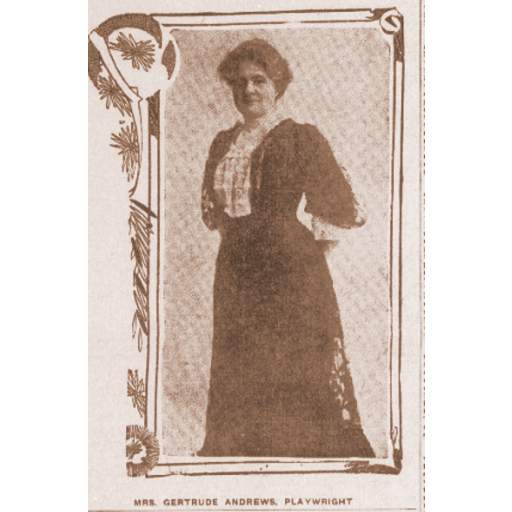
Gertrude Nelson Andrews
Gertrude Nelson Andrews, suffrage activist and successful playwright whose works included the feminist play Through a Window (1909).

Leonora O'Reilly
Suffragist and trade union organizer Leonora O'Reilly, shown with her daughter, circa 1908.
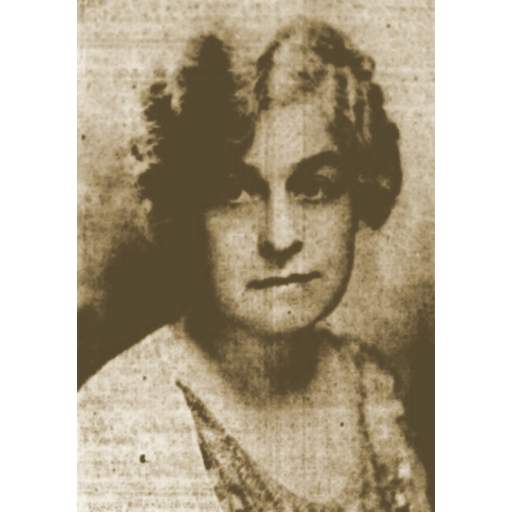
Marie Jenney Howe
Marie Jenney Howe. Born in Syracuse, she engaged in various radical reform activities and emerged as a scholar of French author George Sand.
